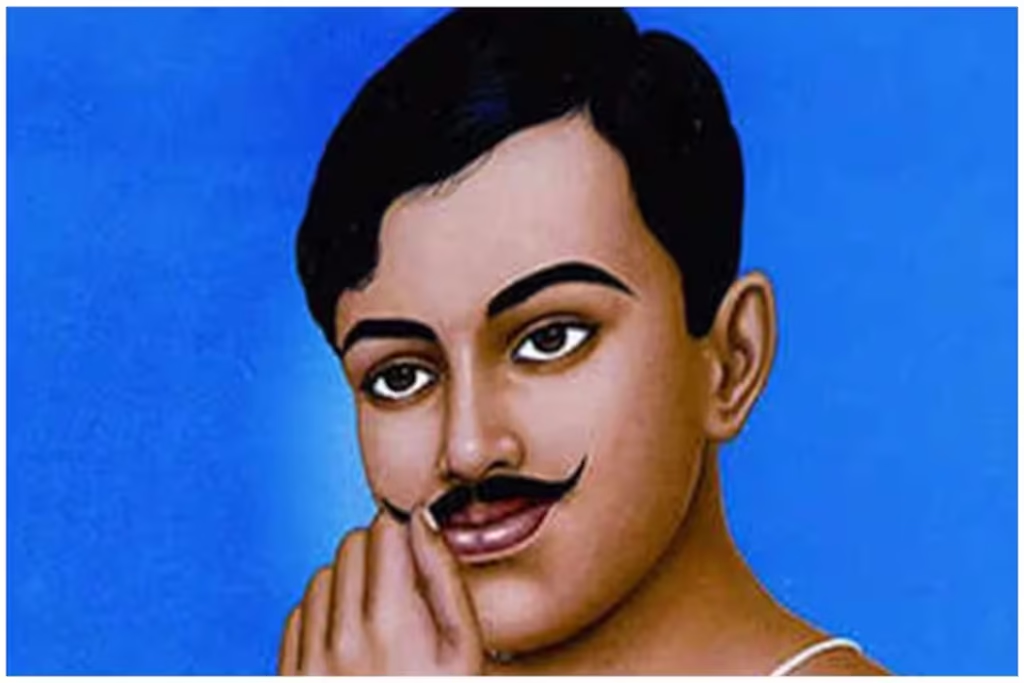
Chandra Shekhar Azad played a crucial role in the development of India’s revolutionary struggle against British rule. His journey from joining the Hindustan Republican Association (HRA) to transforming it into the Hindustan Socialist Republican Association (HSRA) marked a turning point in the freedom movement.
🔹 Joining the Hindustan Republican Association (HRA)
Background of HRA
- Founded in 1924, the Hindustan Republican Association (HRA) was an underground revolutionary organization.
- Its primary goal was to overthrow British rule through armed resistance.
- Key founders included Ram Prasad Bismil, Ashfaqulla Khan, Sachindra Nath Sanyal, and Jogesh Chandra Chatterjee.
Azad’s Entry and Rise
- After Mahatma Gandhi withdrew the Non-Cooperation Movement in 1922, many young nationalists felt disillusioned and turned to violent resistance.
- Azad joined HRA and quickly gained a reputation for his bravery, shooting skills, and dedication.
- He became Bismil’s trusted associate, helping to plan and execute revolutionary activities.
- His ability to evade capture and remain underground made him a key strategist in the movement.
HRA’s Notable Activities
- Conducted fundraising through armed actions, including the Kakori Train Robbery (1925).
- Printed and distributed revolutionary pamphlets to inspire the youth.
- Created secret cells across North India to expand the movement.
🔹 Transformation into the Hindustan Socialist Republican Association (HSRA)
The Impact of the Kakori Conspiracy (1925)
- The Kakori Train Robbery was a major act of defiance against British rule.
- However, the British arrested and executed Ram Prasad Bismil, Ashfaqulla Khan, Rajendra Lahiri, and Roshan Singh in 1927.
- With most of its leaders gone, the HRA needed new leadership and direction.
Azad, Bhagat Singh, and the New Vision
- Azad, along with Bhagat Singh, Sukhdev, Rajguru, and Chandrasekhar Dutt, decided to reorganize HRA with a new ideology.
- In September 1928, they renamed the organization as Hindustan Socialist Republican Association (HSRA).
Key Changes Under HSRA
- Shift to Socialism
- Earlier, HRA focused on armed struggle for independence, but HSRA aimed for both political and economic revolution.
- Inspired by socialist principles, they wanted an independent India free from poverty, inequality, and exploitation.
- New Leadership Structure
- Chandra Shekhar Azad became the Commander-in-Chief, responsible for military planning and training.
- Bhagat Singh, Sukhdev, and Rajguru took charge of propaganda and ideology building.
- Larger Revolutionary Network
- HSRA expanded its reach beyond Uttar Pradesh and Punjab, connecting with revolutionaries in Bengal, Maharashtra, and South India.
- Secret training camps were set up to prepare new recruits.
🔹 HSRA’s Major Revolutionary Activities
1. Killing of J.P. Saunders (1928)
- Lala Lajpat Rai’s death due to police brutality in October 1928 enraged the HSRA.
- They planned to assassinate James A. Scott, the officer responsible for the attack.
- However, in a case of mistaken identity, J.P. Saunders was killed instead.
- Azad provided cover fire, helping Bhagat Singh and Rajguru escape from Lahore.
2. Assembly Bombing Case (1929)
- Bhagat Singh and Batukeshwar Dutt threw bombs in the Central Legislative Assembly, Delhi, to protest against repressive British laws.
- The bombs were non-lethal, designed to make noise and attract attention.
- The revolutionaries surrendered intentionally, using the trial as a platform to spread their message.
3. Secret Training Camps and Guerrilla Warfare
- Azad set up secret training camps in Jhansi, Benares, and Allahabad.
- Revolutionaries were trained in:
- Weapon handling and shooting practice.
- Explosives and bomb-making techniques.
- Stealth operations and evasion tactics.
4. Attempts to Free Bhagat Singh (1930–1931)
- After Bhagat Singh, Sukhdev, and Rajguru were sentenced to death, Azad tried to orchestrate a rescue plan.
- However, before any plan could be executed, he was betrayed and killed in 1931.
🔹 Azad’s Martyrdom (1931)
- On 27th February 1931, British police surrounded Alfred Park, Allahabad, after receiving information about Azad’s location.
- He fought a long gun battle, killing several British officers.
- With his last bullet, he shot himself, keeping his promise to never be captured alive.
🔹 Legacy of HSRA and Azad
- HSRA’s vision of socialism and armed revolution inspired future movements like the Quit India Movement (1942).
- Chandra Shekhar Azad remains a symbol of defiance and patriotism, inspiring generations.
- Alfred Park was renamed Chandra Shekhar Azad Park in his honor.
- His words still echo in the hearts of Indians:
“Dushman ki goliyon ka hum samna karenge, Azad hi rahein hain, Azad hi rahenge!”
(We will face the enemy’s bullets, we are free and will remain free!)
Azad’s transformation from a young nationalist to the Commander-in-Chief of HSRA cemented his place in history as a fearless warrior and an undying revolutionary. 🚩